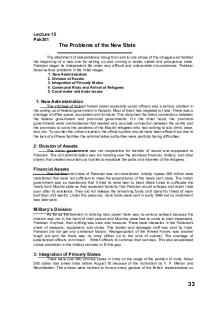History of Early Chemistry PDF

| Title | History of Early Chemistry |
|---|---|
| Author | Cardio Logy |
| Course | Chemistry |
| Institution | جامعة عين شمس |
| Pages | 3 |
| File Size | 300.2 KB |
| File Type | |
| Total Downloads | 97 |
| Total Views | 138 |
Summary
to understand History of Early Chemistry...
Description
Timeline: History of Early Chemistry Directions: View the information for each time period below. 8000 – 1000 BC Early Chemical Arts
Long before philosophers or scientists began to consider theories of matter, ancient civilizations were using technologies that would later form different branches of chemistry. These activities included extracting copper and iron from ore, making glass from sand, fermenting beer and wine, using enzymes to make cheese from milk, extracting substances from plants for medicine, and making pigments for painting and cosmetics.
1000 BC – 450 BC Ancient Greek Ideas about Matter
Early Greek philosophers pondered the question of what the universe was made of. Several different thinkers proposed that all matter was made from four fundamental substances in different combinations: earth, air, fire, and water.
450 – 400 BC Democritus Proposes Fundamental Particles
The ancient Greek philosopher Democritus proposed that all matter was composed of fundamental, uncuttable bits called atomos. To show how this strange idea could be true, Democritus’ teacher pointed out that a beach looks smooth when viewed from far away but it is really made of many individual grains of sand.
300 BC – 1200 AD Rise of Alchemy
Many different cultures, including those in China, India and the Middle East, began to practice alchemy. Alchemy was a mix of philosophy, mysticism, and science-like thinking. A main goal of alchemy was to change less valuable metals into gold and silver. During this time, many Islamic alchemists improved the purity of substances such as acids and gunpowder in their search for mystical materials.
1200 AD – 1400 AD Alchemy in the Western World
As alchemical ideas spread westward, European alchemists continued trying to convert materials into one another. They also sought to create a “elixir of life” that would cure all diseases and allow people to live forever. The practical techniques developed and used by alchemists established the basic procedures, equipment and identification methods used by modern chemists.
1400 AD – 1600 AD Renaissance Science
Alchemical ideas began to fall out of favor during the Renaissance. Around 1530, Paracelsus, a physician, botanist, alchemist, and astrologer, developed iatrochemistry, the use of alchemy to create medicines. This area of alchemy was dedicated to extending life. It established the roots of the modern pharmaceutical industry.
1661 AD Robert Boyle: The "Sceptical Chemyst"
Robert Boyle was an English philosopher, chemist, physicist and inventor who insisted that science be done by experiment, not just by thinking about what could be. His book, “The Sceptical Chymist,” described experiments which disproved the idea of the four classic “elements: (earth, fire, air and water). He also used data to describe the relationship between pressure and volume of gases.
1774 AD – 1794 AD Lavoisier: "The father of modern chemistry"
French scientist Antoine Lavoisier proved that oxygen was the component of air that combines with substances as they burn. This conclusion disproved the phlogiston theory of combustion that had held for nearly 100 years. Lavoisier later developed the first modern system of naming chemical compounds....
Similar Free PDFs

History of Early Chemistry
- 3 Pages

Cradles of Early Science
- 5 Pages

Early Signs of Schizophrenia
- 5 Pages

01 Early Problems of Pakistan
- 2 Pages

Early hiphop
- 2 Pages

Chemistry of Carbohydrates
- 22 Pages

Different types of Chemistry
- 5 Pages

Overview of molybdenum chemistry
- 18 Pages

Chemistry of Life LAB
- 4 Pages

Chemistry of Biology - Exam
- 11 Pages
Popular Institutions
- Tinajero National High School - Annex
- Politeknik Caltex Riau
- Yokohama City University
- SGT University
- University of Al-Qadisiyah
- Divine Word College of Vigan
- Techniek College Rotterdam
- Universidade de Santiago
- Universiti Teknologi MARA Cawangan Johor Kampus Pasir Gudang
- Poltekkes Kemenkes Yogyakarta
- Baguio City National High School
- Colegio san marcos
- preparatoria uno
- Centro de Bachillerato Tecnológico Industrial y de Servicios No. 107
- Dalian Maritime University
- Quang Trung Secondary School
- Colegio Tecnológico en Informática
- Corporación Regional de Educación Superior
- Grupo CEDVA
- Dar Al Uloom University
- Centro de Estudios Preuniversitarios de la Universidad Nacional de Ingeniería
- 上智大学
- Aakash International School, Nuna Majara
- San Felipe Neri Catholic School
- Kang Chiao International School - New Taipei City
- Misamis Occidental National High School
- Institución Educativa Escuela Normal Juan Ladrilleros
- Kolehiyo ng Pantukan
- Batanes State College
- Instituto Continental
- Sekolah Menengah Kejuruan Kesehatan Kaltara (Tarakan)
- Colegio de La Inmaculada Concepcion - Cebu





